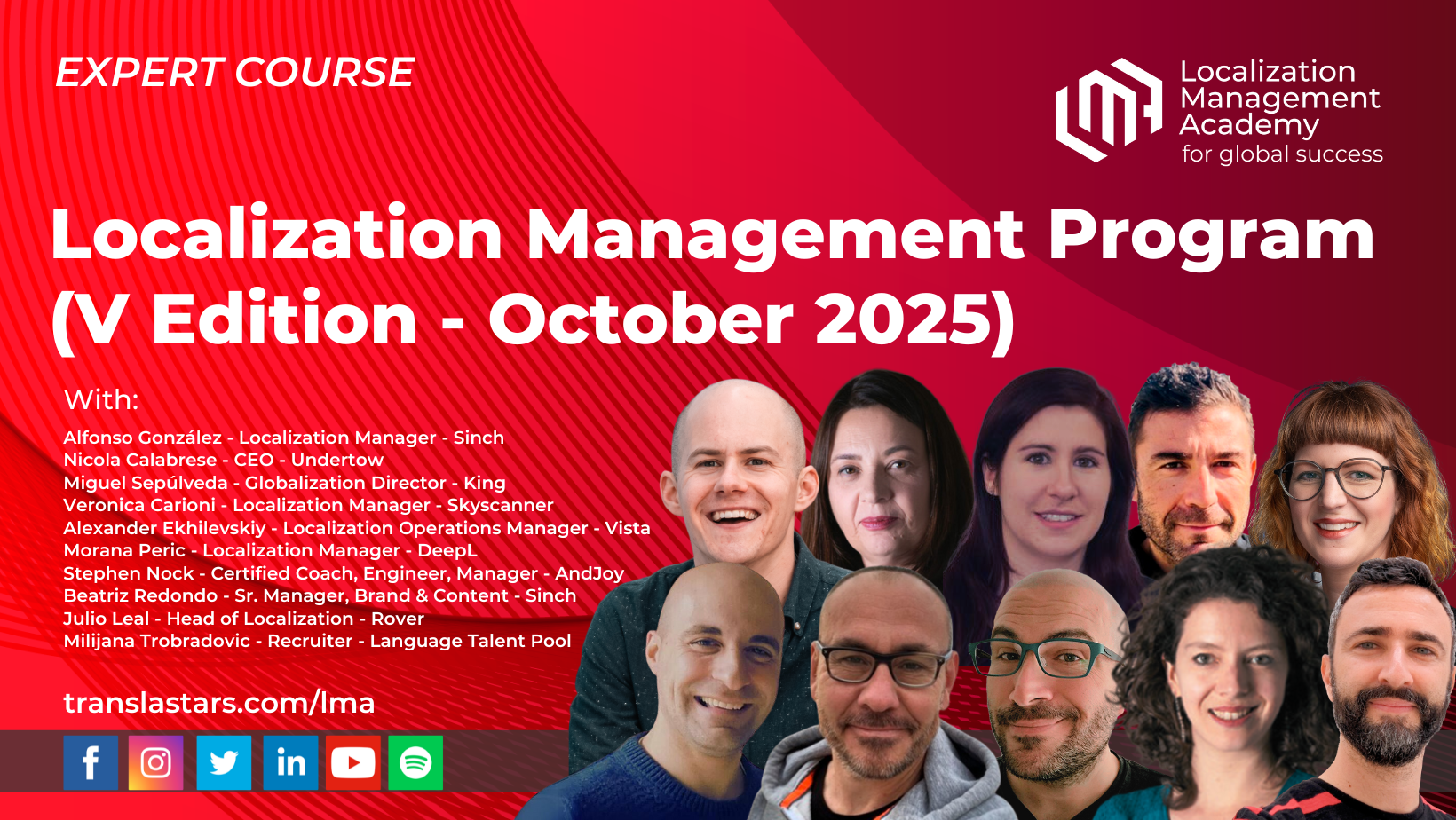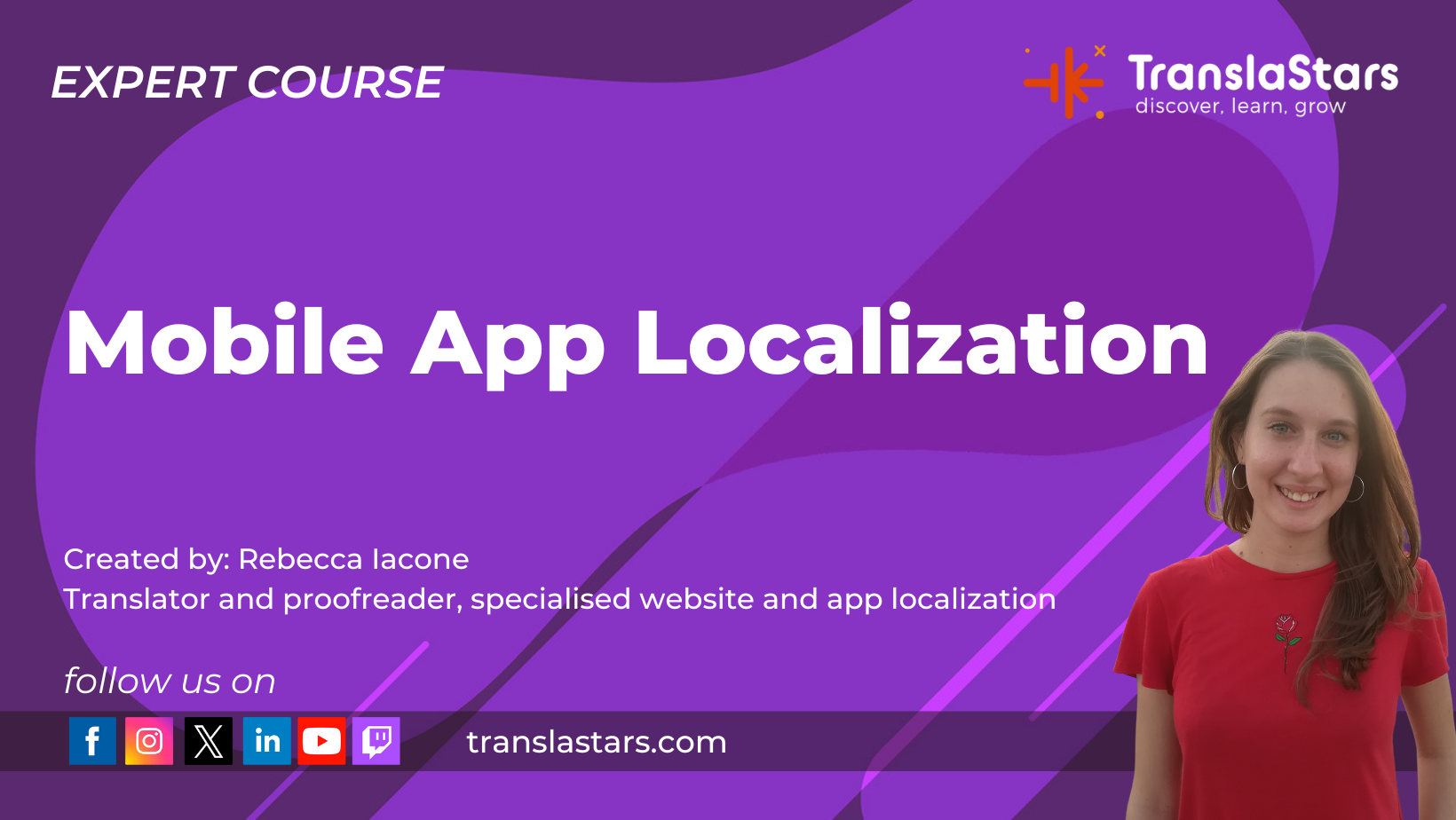A research published by Petroc Taylor in May 2024 states that there are more than seven billions of smartphone – therefore, app – users worldwide.
Something so useful and personal as an app that we download on our smartphones should speak our language, resonate with our habits and way of thinking, and be easy to use.
But what do we mean with the term “app localization”?
The importance of app localization
The process includes adapting currencies, values, graphics, colour schemes, symbols, and everything necessary for a satisfying user experience in every country the app is available in.
According to a study conducted by CSA Research with the title Can’t Read Won’t Buy, 40% of online buyers won’t buy from a website or an app displayed in a foreign language. Moreover, Distomo’s research, The Impact of App Localization, showed that localized apps registered a 28% increase in their download rate.
Companies that had their apps localized saw a 26% increase in revenue for each country the app reached. Additionally, 86% of consumers affirm that they are willing to pay more for the best user experience.


1. App structure, development and terminology
How is it structured? Who is the target user?
Is it designed for all operating systems?
If the app is already available in the source language, download it to your phone and explore it as if you were a user.
Ask the client all the questions you have in order to clear out all doubts, especially about how they want to communicate the app’s value.

2. Strings with no context
Where does this button go? Where does this CTA redirect to?
It’s not easy and it may slow down the process, but that’s not your fault. Work as close as possible with the app developers, ask every question you have without fear of looking unprofessional, and state clearly that you will need some more help and instructions due to the lack of context.
3. Small screen size leads to limited space available
Apps are
designed to be used on a small screen, such as a smartphone screen, which means that
the text can’t be too long, otherwise some UI elements may break or overflow if
they were designed for a specific language.
Some languages, such as German or
Italian, take up much more space than English, while languages like Japanese or
Korean are shorter in character count, but taller in appearance.
Character
restrictions are particularly relevant for buttons, tab titles, and menu items. Flexible
layouts like auto-resizing text containers can be a good solution, but in
most cases, localizers will have to get creative and come up with ideas to
shorten text units while maintaining clarity.
A good example of this is the
activation setting for Wi-Fi on a computer or a smartphone. In Italian, words
like “attivo”, “non attivo” are too long to be displayed on the button,
therefore, localizers usually keep the English “on” and “off”. In Spanish, it’s
common to use “Sì” and “No” in this case. In some other cases, fonts can be
compressed to make a long word visible without abbreviating it.
Moreover,
some platforms have their own character limits. iOS doesn’t support more than
178 (around 30 for the title, around 150 for the body) characters in push
notifications, while Android doesn’t support more than 240 characters, plus 60
for the title.
If the notification text exceeds this limit, it won’t be
entirely visible on the wallpaper, which affects the readability of the
notification and, consequently, the user’s interest. Getting used to this
limitation can be hard at first, since we don’t have strict limitations when we
write.
Keep an eye on all the apps on your smartphone and check how character
limitations were solved in different sections of the app in your target
language to get some ideas for your own work.

4. Usability and likability over accuracy
If you’ve ever played a game on your smartphone or used a poorly localized app because you couldn’t do otherwise, you’ll understand what I mean.
Apps meet some of the users’ most important needs, and they want them to do their job fast. Most users won’t delete an app for a wrong verb or a typo (I’m thinking about all the times I’ve seen the verb “to save” translated with “salvare” into Italian), but they will delete it if it has too many bugs, if it’s too slow, or if instructions are unclear.
The user wants to know exactly what will happen once they touch a button. Make sure your translation is intuitive, user-friendly, understandable, and tailored to the target user.
The localization of an app like WhatsApp, used by everyone, including older people, requires a different tone than an app like BeReal, mainly designed for younger people who are familiar with social media dynamics.
5. Time, date, currency format
This issue is crucial in localization, other than strongly linked to usability and likability. Localization is all about adapting content to foreign customers, who are used to different time and date formats, different currencies, and even different payment methods.
If an Italian user has to fill in information in a MM/DD/YYYY format or only sees the price of an item in dollars, they will probably delete the app. Never forget to change the time and date format so that users won’t get confused. Ask the client for all necessary information about price changes in a foreign currency.
6. Buttons and menu items
Buttons and menu items guide the user through the whole app and are a key element to a smooth user experience. Keep it short and simple, use commonly known abbreviations, and make sure the user understands exactly what to do.
Buttons come in different shapes, colours, and animations. Check where it appears on the original app and how it behaves, if possible.
What does it trigger? Check the page that opens once you click on the button. Make sure that your translation is coherent with the layout. A smart move here is, again, to explore the apps you use and check how frequently used buttons (such as “Learn more”, “Shop”, “Add to cart”, “Send”, and so on) are localized.
7. Images
However, images and graphics are not always be suitable for all cultures. Check that images and embedded text displayed in the app resonate with the target culture and are appropriate. There may be an image that represents something not very typical for the target country.
For example, if you’re localizing an app for Italy, you may want to take out the image of a busy city surrounded by skyscrapers. While localizing the app of a video editing tool, I bumped into a sentence that aimed at showing the user how comfortable the tool was, because it allows you to even “work from the bus”.
The thing is… Italians don’t usually work when they’re on the bus, but they surely work when they’re travelling on a train! So, to make the image more suitable for the target audience, I suggested using a train image instead of a bus.
These things make the user feel like the app was designed for them specifically, and suggestions like these will show your client that you truly know what resonates with the target audience and that you truly care for their product to shine in the new market.

8. Variables
% items
added to your cart > 8 items added to your cart
Removing
% items > Removing 3 items
Variables
can turn into nightmares for linguists. Most languages have different plural
forms based on the nouns’ gender or the context, while English only has one
plural form. So, what happens with inflected languages?
A good
solution may be to rephrase the sentence so that it fits all cases, if this
aligns with localization engineers’ instructions. Here’s an example:
Number of
items in your cart: 8
You could also create separate strings for each form and inform the app developer or the client so that they handle the code for every string. The right solution depends on the client’s needs, but you could offer different options.
9. Legal requirements
Launching an app in a foreign country means adapting to that country’s laws and legal requirements. The company must consider all legal matters, but linguists must be able to craft a communication strategy that reflects this commitment. Most apps have a Terms and Conditions section that has to be localized according to the target country. Legal requirements also include payment processing regulations, age verification procedures, tax and reporting obligations, content moderation, and so on.
10. Right-to-left language support and special characters
Languages
like Arabic, Urdu, or Hebrew are written right-to-left (RTL).
This problem is
usually handled by app developers by allowing RTL support when needed through
software like Quasar
Framework.
The same goes for accented characters, diacritics, ligatures, or non-Latin scripts:
to avoid character break, app developers must ensure Unicode (UTF-8) support in the app, backend, and database.
Conclusion
If you wish to specialize in mobile app localization, check out our advanced course "Mobile App Localization".






